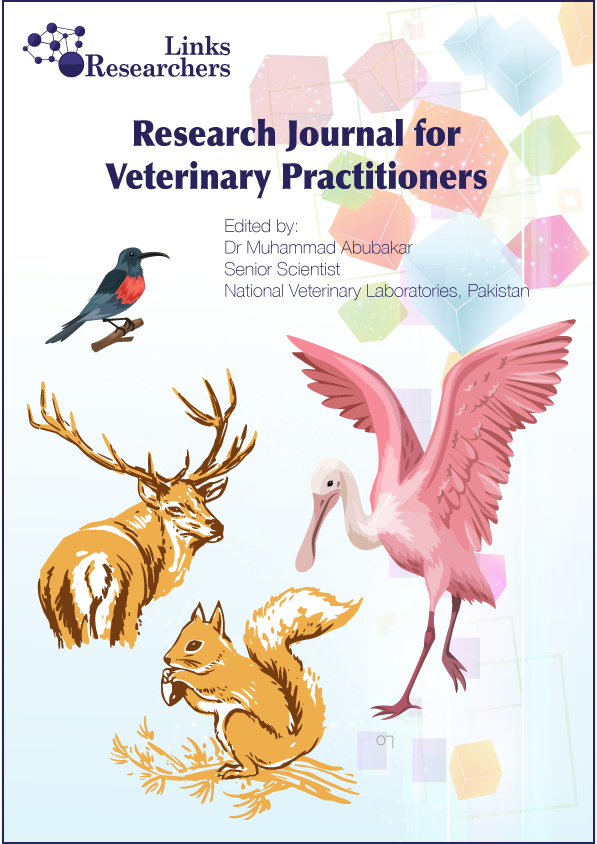Raheela Noor Memon1*, Nadir Ali Birmani1, Naeem Tariq Narejo2 and Shahnaz Rashid3
Uzochukwu Ephraim Emeto, Chukwuemeka Calistus Okolo* and Nwakaego Ernestina Nweze
Anatoly Murashevich Bittirov1*, Sadrutdin Shamshitovich Kabardiev1, Ayub Yusupovich Aliev1, Boris Kazievich Laipanov2, Svetlana Aleksandrovna Shemyakova2, Ismail Anatolyevich Bittirov1
W. Khan, N. U. Nisa, A. Khan and S. M. H. M. Naqvi
Vladimir Vasilievich Shimalov
Kunlayaphat Wuthijaree1, Pattaraporn Tatsapong1, Sukanya Yung-Rahang2, Prayad Thirawong2, Koonphol Pongmanee2*
Rand K. Abbas1, Zahraa S. Hadi1*, Zainab A. Hussein2, Sajad K. Matooq3
Featuring
-
Economic Values on Carcass and Non-Carcass of Beef Cattle Based on Sex at the Manokwari Slaughterhouse, West Papua, Indonesia
Iriani Sumpe, Bambang Suhartanto, Siti Andarwati, Tri Anggraeni Kusumastuti
Adv. Anim. Vet. Sci., Vol. 13, Iss. 1, pp. 157-165
-
Phenotypic and Morphometric Characterization of Local, Improved and Pietrain Stress-Negative Pigs and the Products of their Crossbreeding in Benin
Constant Boris Bankole, Ignace Ogoudanan Dotche, Serge Gbênagnon Ahounou, Mahamadou Dahouda, Issaka Youssao Abdou Karim, Marcel Senou
Adv. Anim. Vet. Sci., Vol. 13, Iss. 1, pp. 146-156
-
Enhancing Milk Yield and Quality of Holstein Friesian through Special Formulation Urea Molasses Multinutrient Block
A. Arif Rahman, Renny Fatmyah Utamy, Ambo Ako, Mohammad Mijanur Rahman, Siti Annisa Sukri
Adv. Anim. Vet. Sci., Vol. 13, Iss. 1, pp. 139-145
-
The Potency of Probiotics and Acidifiers on Body Weight, Feed Efficiency, Cholesterol, HDL, LDL in Meat of Broiler Chickens Infected with Escherichia Coli
Widya Paramita Lokapirnasari, Nanik Hidayatik, Eka Pramyrtha Hestianah, Himatul Ilma Silfia, Muhammad Aviv Firdaus, A. Sherasiya, Andreas Berny Yulianto, Mirni Lamid, M. Anam Al-Arif, Ertika Fitri Lisnanti, Zein Ahmad Baihaqi, Tabita Dameria Marbun
Adv. Anim. Vet. Sci., Vol. 13, Iss. 1, pp. 131-138
Subscribe Today
Receive free updates on new articles, opportunities and benefits

© 2025 ResearchersLinks. All rights Reserved. ResearchersLinks is a member of CrossRef, CrossMark, iThenticate.







